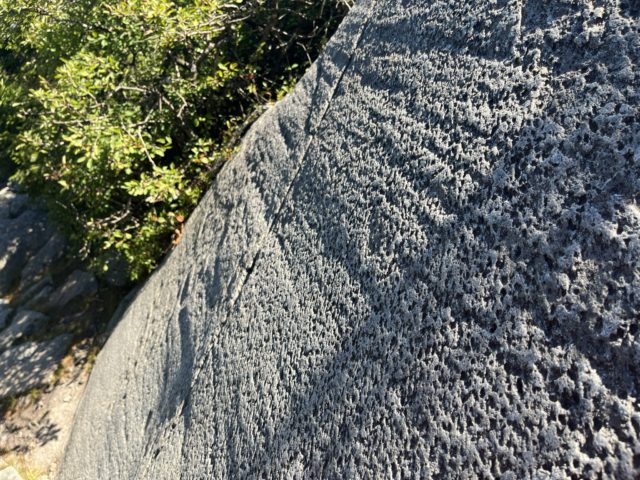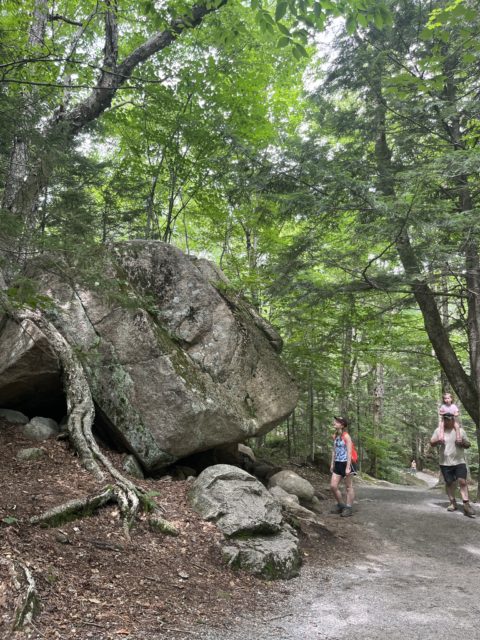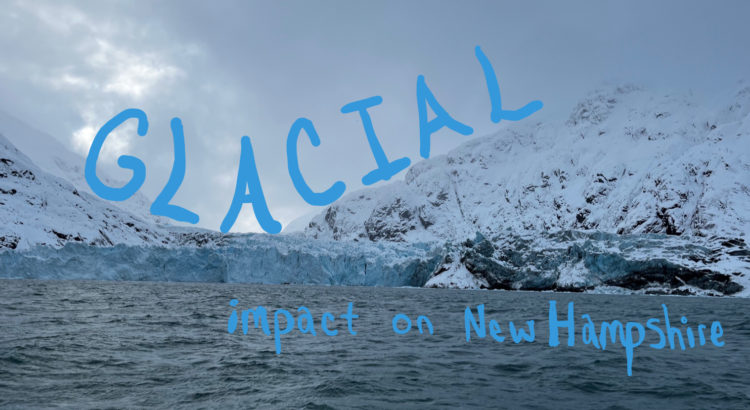Greta Ketchner- SCA NH Corps- Discover the Power of Parks Interpretive Ranger
New Hampshire is a beautiful place to visit, but long before we set foot on paths to go hiking here, there was a large volume of ice which covered the land during the last ice age. Glaciers can act as sandpaper or bulldozers and leave their mark on the land. The force of the glacier moving though land removes all plants in its path and leaves behind a changed landscape. Here are some inspiring local places that have been impacted by glaciers which I have visited since spending the summer here in New Hampshire.
Crawford Notch State Park

Glaciers carve U- shaped valleys when they move through mountain ranges. If you see a U-shaped valley in your travels, consider that it may have been created by a glacier.
Monadnock State Park
Mount Monadnock was impacted by glaciers around 14,000 years ago, when the last little ice age covered most of North America. The shape of Mount Monadnock which we see today was created when the glacier moved over the mountain, traveling from the North-West direction and moving South-East. The White Dot and White Cross Trails, which is one of the most popular routes taken from Park Headquarters, are steeper than some of the alternative trails on the other side of the mountain such as the Dublin or Marlboro trails. Where trails are located on the mountain impacts how steep of a climb hikers will have.


Franconia Notch State Park
The Flume Gorge in Franconia Notch State Park, began flowing again as the last glaciers melted. The glaciers may have removed sediment and rocks from the flume but did not significantly impact the gorge.


Franconia Notch also has beautiful views along the Franconia Notch Parkway. From a short hike to Artist’s Bluff there is a beautiful view of the U-shaped valley which encompasses the surroundings of the Notch with the highway running through it.
Madison Boulder Natural Area
New Hampshire is famous for having the largest glacier erratic in all of North America. It is located in Madison, New Hampshire. Madison Boulder Natural Area is a great spot to check out if you are nearby in the eastern White Mountains region. Check out this blog post by Tom Howe which explains more about it.
White Lake State Park

White Lake is a glacial lake which was formed from glaciers. Glacial lakes typically have crystal clear water. Most lakes in New Hampshire were formed by glacial activity, including Newfound Lake and Lake Winnipesaukee.
Special Thank You to Amy Swift, The Flume Gorge Park Manager from Franconia Notch for allowing me to visit the Flume Gorge in Franconia Notch State Park. I am also grateful for time spent at Glacier Bay National Park as a Distance Learning Intern, which gave me an appreciation for Glaciers and their mighty power. The featured image of this post is Margerie Glacier, a tidewater glacier located in Glacier Bay National Park.

